What’s the weather like in Japan in June?
Temperatures and humidity are high with average temperatures being in the upper 70s and low 80s. June is called minazuki traditionally, which means “month of water.”
If you plan to be outside during your vacation to Japan, summer is a nice time to go. The weather is warm, but not overly hot. It’s humid, and even though it’s the beginning of monsoon season, the rainy season usually brings reliable afternoon showers. Carrying an umbrella when going out will be a necessity.
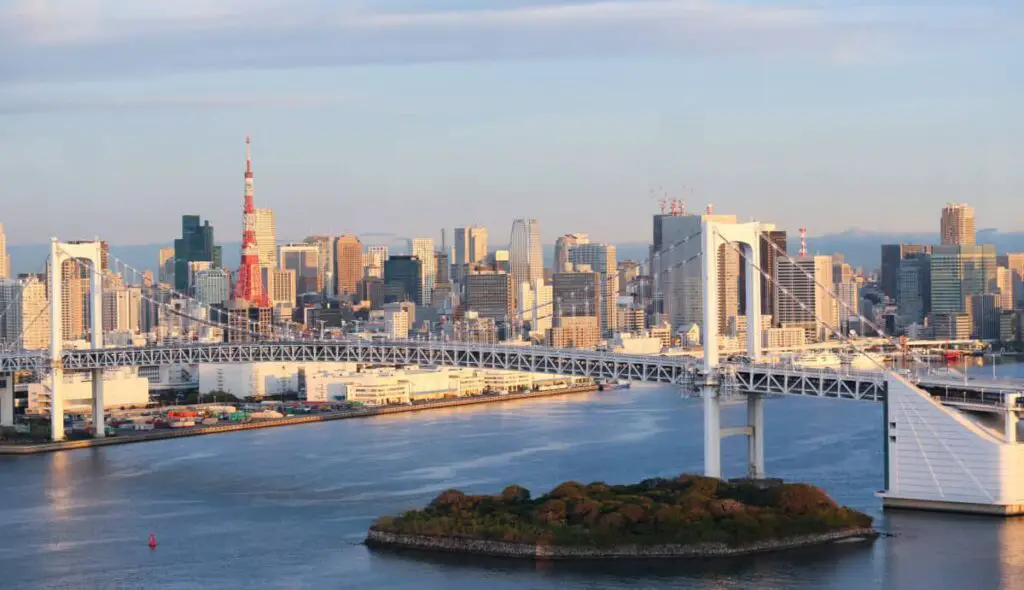
The weather is nice enough to enjoy the extensive walking tours, parks, temples, and gardens. Museums, aquariums, and shopping. Mount Fuji and its surrounding attractions are in full swing in June, making it a great time to visit.
What season is June in Japan?
June marks the beginning of summer in Japan. June in Japan is beautiful and colorful.
The beginning of June is typically sunny, and the rainy season starts around the second or third week of the month, which brings regular afternoon showers. The rainy season is called Tsuyu.
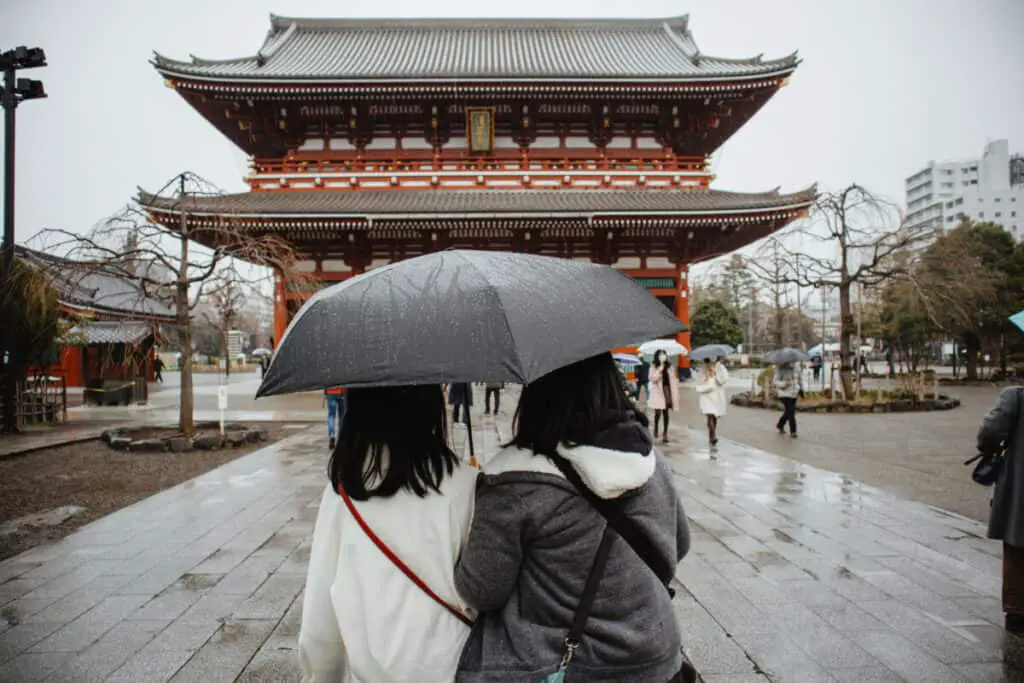
What should I wear in June in Japan?
Long pants, flowy skirts, jeans, t-shirts, and thin outerwear paired with sneakers or sandals would be weather appropriate. The temperatures will be anywhere from 55-80 degrees Fahrenheit and you’ll likely encounter rain.
What do I need for a vacation to Japan in June?
An umbrella will be essential. The smaller compactable ones are convenient and easy to carry. Umbrellas and other weatherproofing items are available at almost any Japanese convenience store.
If you plan to walk through some tours, aquariums, or hike outdoors, you’ll want to bring a pair of comfortable shoes with you.
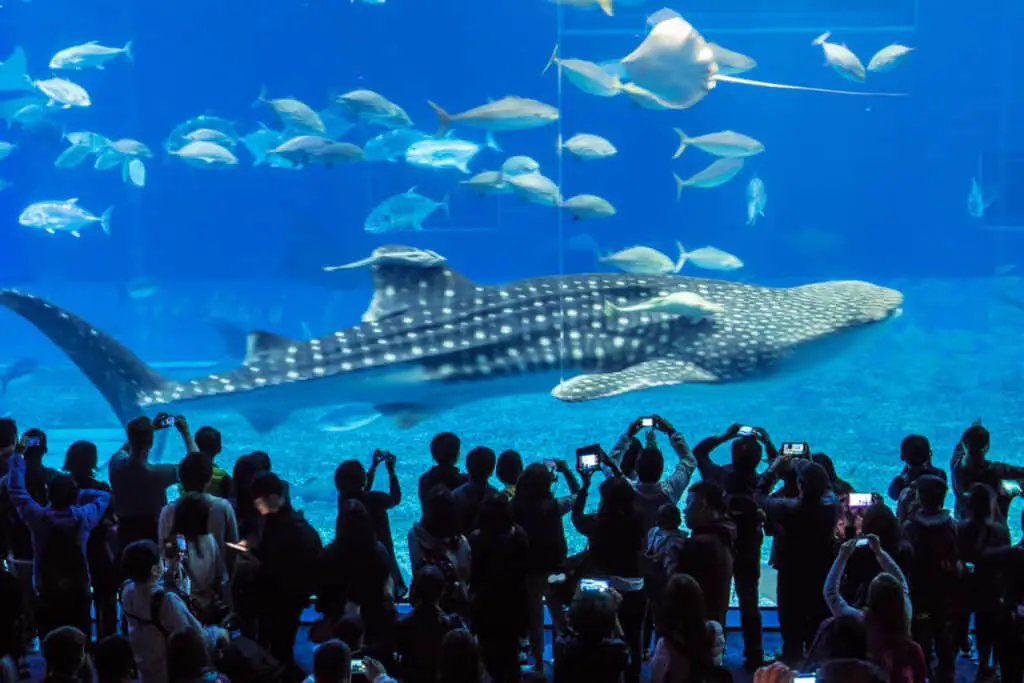
A light jacket, preferably waterproof, will also be a wise addition to your suitcase since you’re likely to run into some afternoon showers during your stay.
What flowers are in bloom in June?
The hydrangea blooms in the rainy season like the cherry blossoms bloom in the Spring. There are festivals, cities, temples, gardens, and other places dedicated to the hydrangea.
If you want to see hydrangeas on your visit to Japan, Kamakura City is well known for hydrangea.
The Iris is also popular, inspiring a festival of its own. The Lotus flower is a must-see for any garden or flower connoisseur.
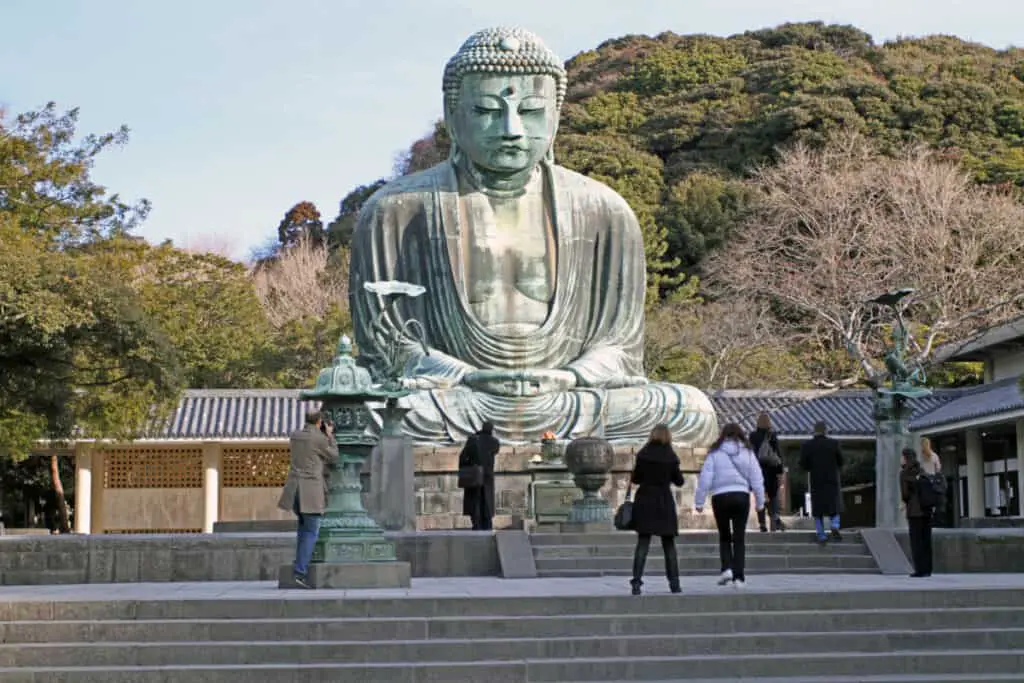
What parks are popular in June?
Yoyogi park hosts various events almost every weekend. These events include festival food, music, and historical festivals.
What temples are popular in June?
Meigetsu-in Temple in Kamakura City, also known as Ajisai-dera, meaning “the Hydrangea Temple” is busiest on the weekends during the rainy season.
Meigetsu-in Templ Official Website
Hase-dera, or Hase Temple is known to have over 40 kinds of hydrangeas. It’s also busy on the weekends during the rainy season. It’s less busy during the week in the mornings, the earlier you visit, the less crowded it will be.
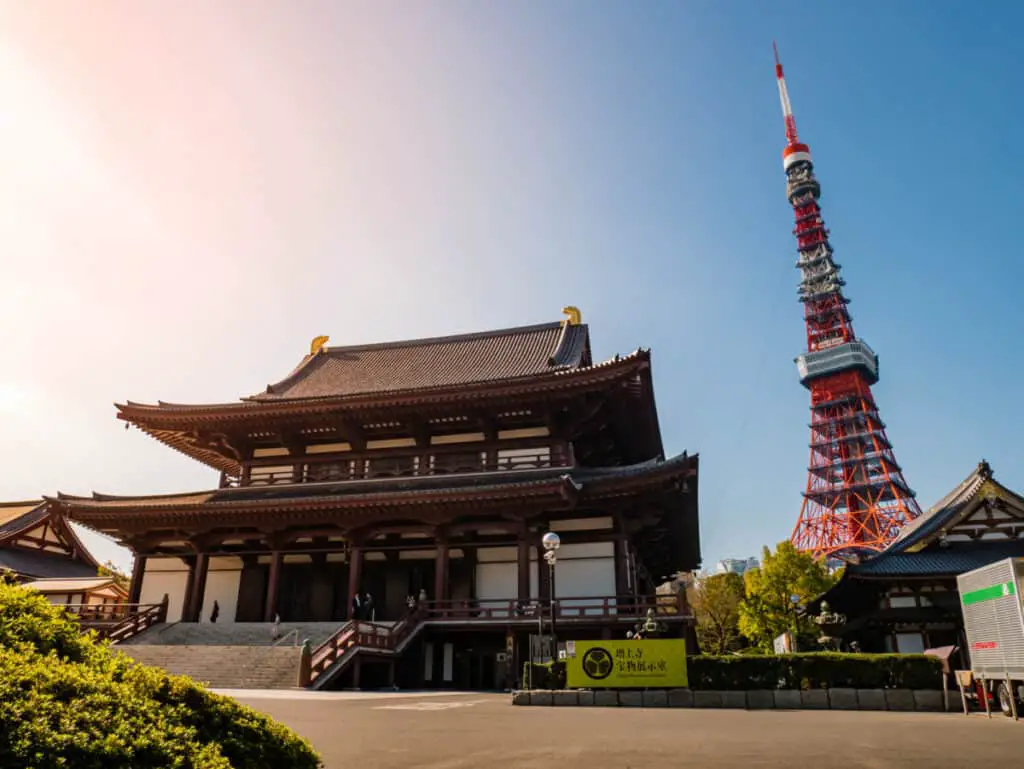
Hase-dera Temple Official Website
Jochiji Temple, ranked fourth among Kamakura’s five mountains, is a Buddhist Zen temple. It doesn’t have as many hydrangeas, but the alliance of the charming temple and the soft flowers makes it a site worth mentioning.
Jochiji Temple Official Website
Saiho-ji, or kokedera, is the moss temple. In most countries, especially western ones, moss is something gardeners try to eradicate, but in Japan, it’s embraced and cultivated. It can be tricky to get access to this temple, but it’s worth the try.
Saiho-ji Temple Official Website
What gardens are popular in Japan?
If you’re interested in visiting gardens in Japan, you’ll have a variety to choose from. Garden design is an art form in Japan, so you’ll find gardens with a variety of styles and purposes.
In June, hydrangeas steal the spotlight, even having exclusive gardens and festivals dedicated to them.
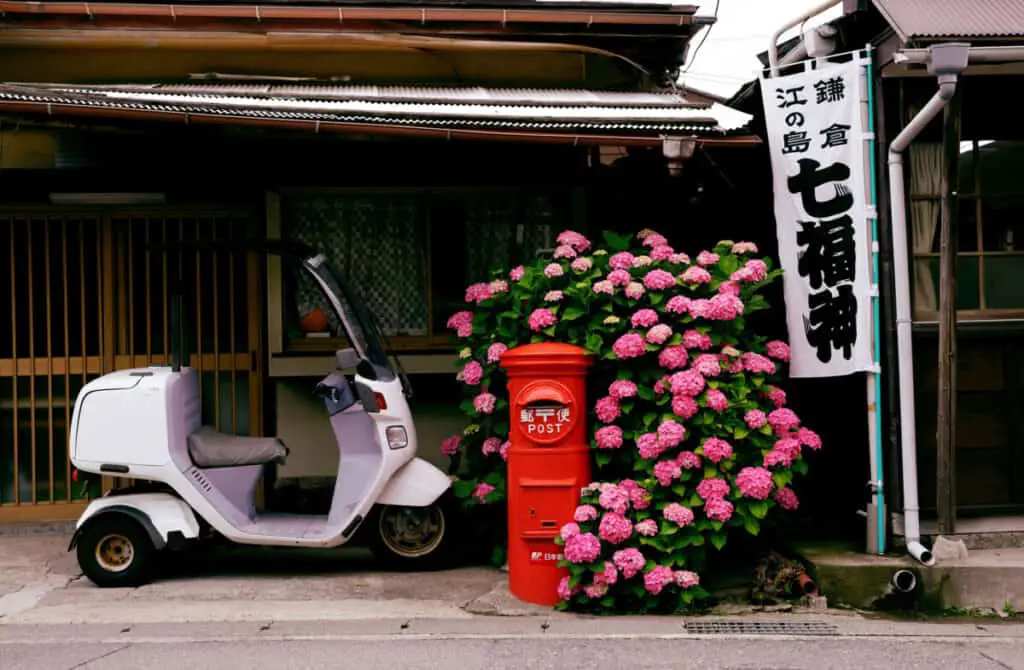
If you’re looking for something different, you could try a karesausui, or a Japanese rock garden termed a zen garden. These gardens are great for a quiet meditative walk.
Kenrokuen is known for its two-legged lanterns, open year-round except for a small period of time for the new year when it’s closed during daylight. An admission fee is charged upon entry.
If you visit the Kenrokuen garden, visit the well-Kanazawa. The teahouse is the oldest building in the garden.
Karasaki Pine was planted by the 13th lord Nariyasu from Karasaki. This garden has a rich history and even richer scenery, making it worth a visit.
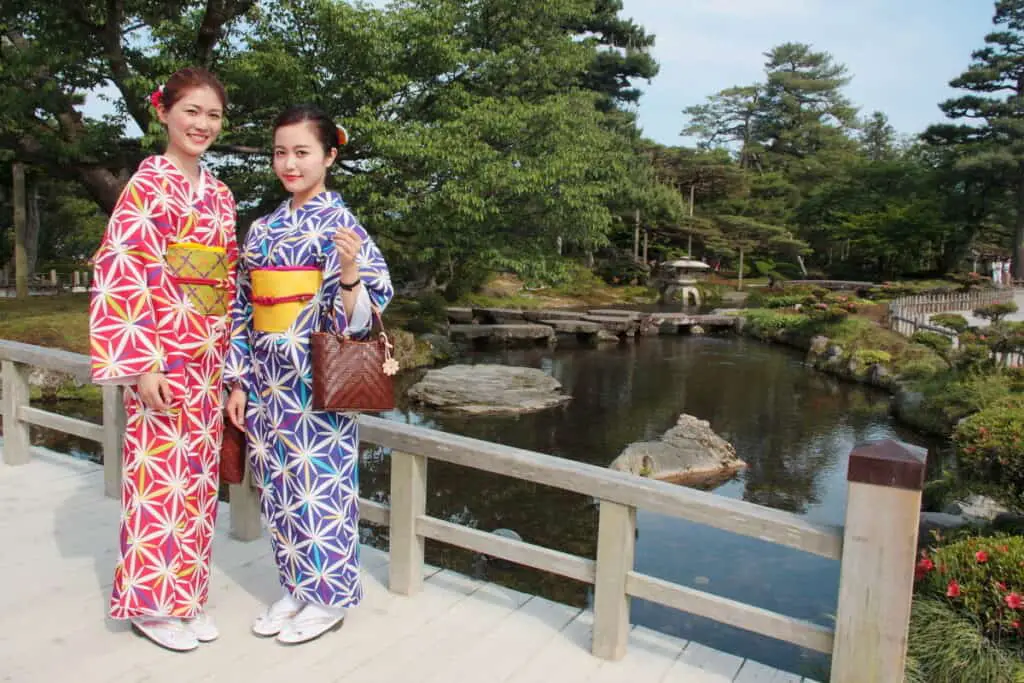
If you’re in or near Tokyo, you could visit Sankien. This garden features a pond central to the park, and historic buildings transferred across the country.
What festivals happen in June?
Sanno Matsuri, or Festival, is one of the three greatest Edo period festivals in Tokyo. This festival is an 11-day celebration.
Sanno Matsuri Via Go Tokyo Official Site
On one main day of the event, a large procession of portable shrines and carriers in costumes make their way through central Tokyo.
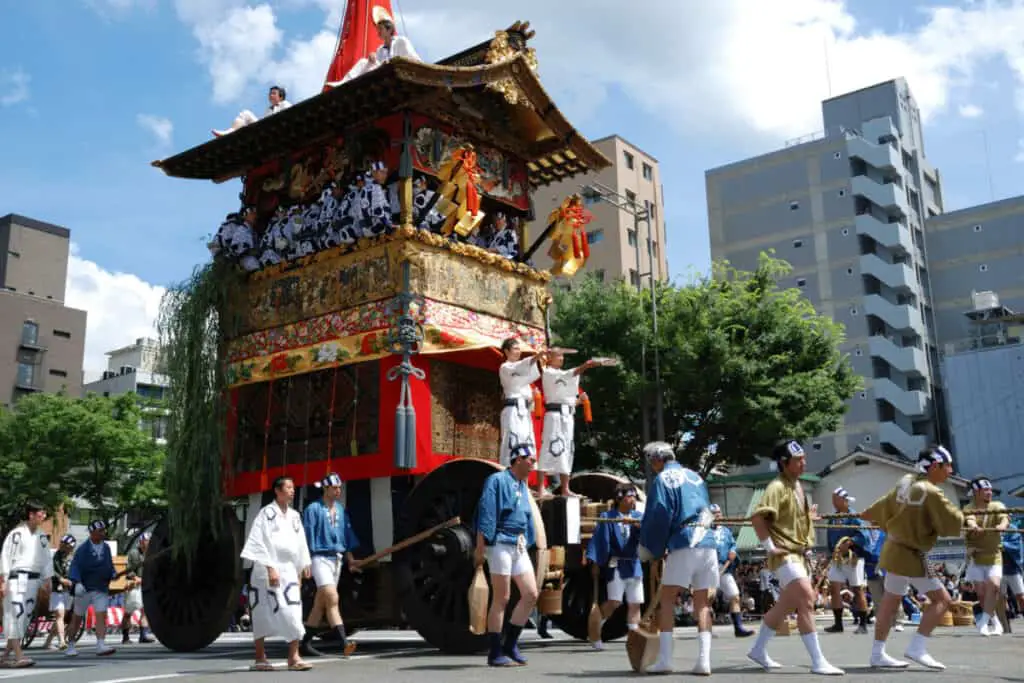
Yosakoi Soran Matsuri is a dance festival featuring traditional folk dance and music. This festival takes place in Sapporo City.
Yosakoi Soran Matsuri Official Site
Hokkaido Shrine Festival or Sapporo Festival happens in mid-June for 3 days. It consists of special events, stalls, attractions, and a large parade on the last day.
Hokkaido Shrine Festival Via Hookaido Guide
This festival celebrates the shrine and rededicates it to celebrate and honor the goddess of the sun and the universe (Amaterasu).
Fussa Firefly Festival is a summer celebration. Good, drink, stalls, and over 500 fireflies make a magical summer evening in June.
Fussa Firefly Festival Via Go Tokyo
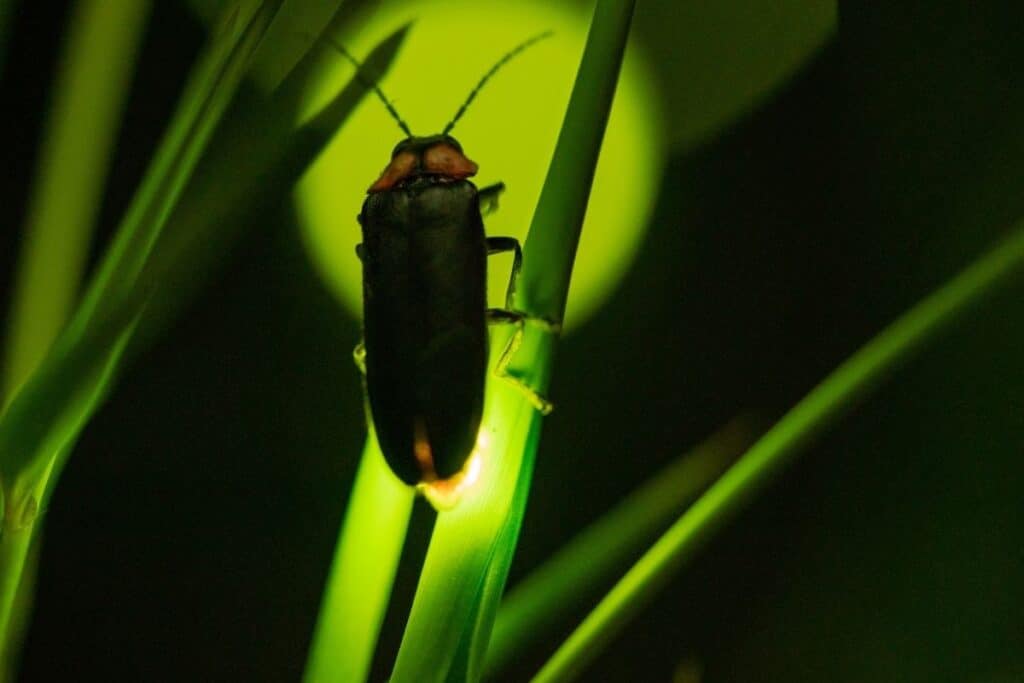
Tsukiji Lion Festival or Shishi Matsuri is an event held once every 2-3 years at Namiyoke Shrine. It features a parade through the area with portable shrines and lion heads.
Tsukiji Lion Festival Via Go Tokyo
Shaved ice or kakigori is a popular summer festival treat found at many stands. Another treat of the trade is fairy floss (rainbow cotton candy).
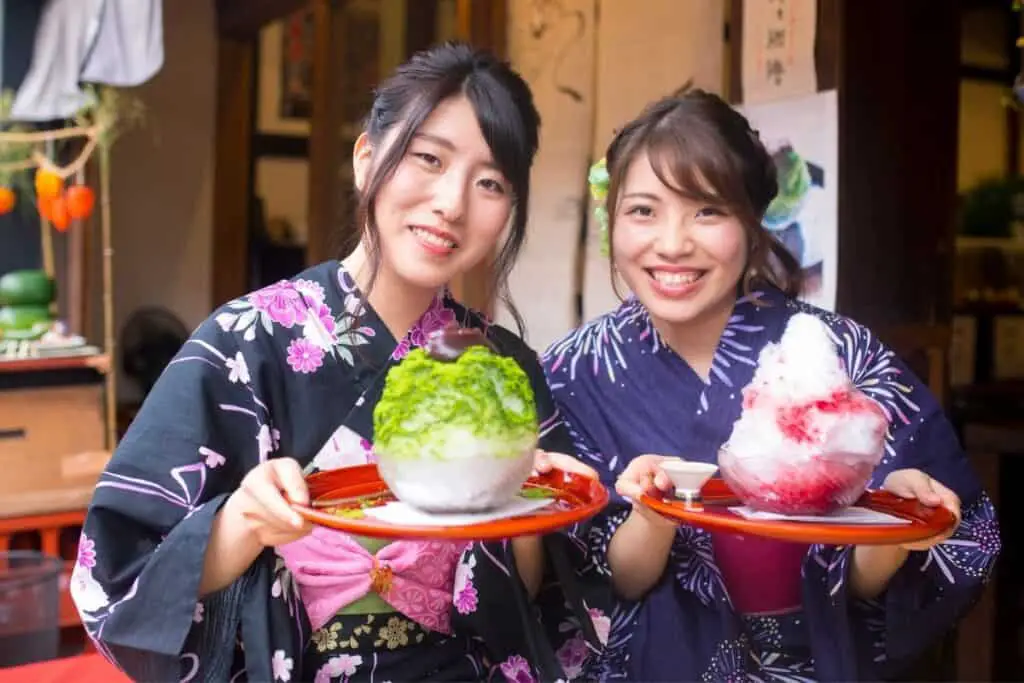
What if I want to avoid the rainy season?
If you’d like to go to Japan but you aren’t a fan of the rainy season, you can visit Northern Japan. In Hokkaido, you can enjoy the mild but beautiful summer, skipping the rain in favor of events, festivals, sights, and wonderful food.
Another option would be to travel to Okinawa. The rainy season has usually passed over Okinawa already. It’s warm and sunny with lots of beaches, temples, and excellent Okinawan dishes.
What kind of foods should I eat while I visit Japan?
In late spring and early summer, Matcha products are in season. There are Matcha dessert buffets during the season with an all-you-can-eat style.
If you’re interested in the experience, there are popular maid cafes where you’ll be served by maids. There is an attraction called Robot Restaurant.
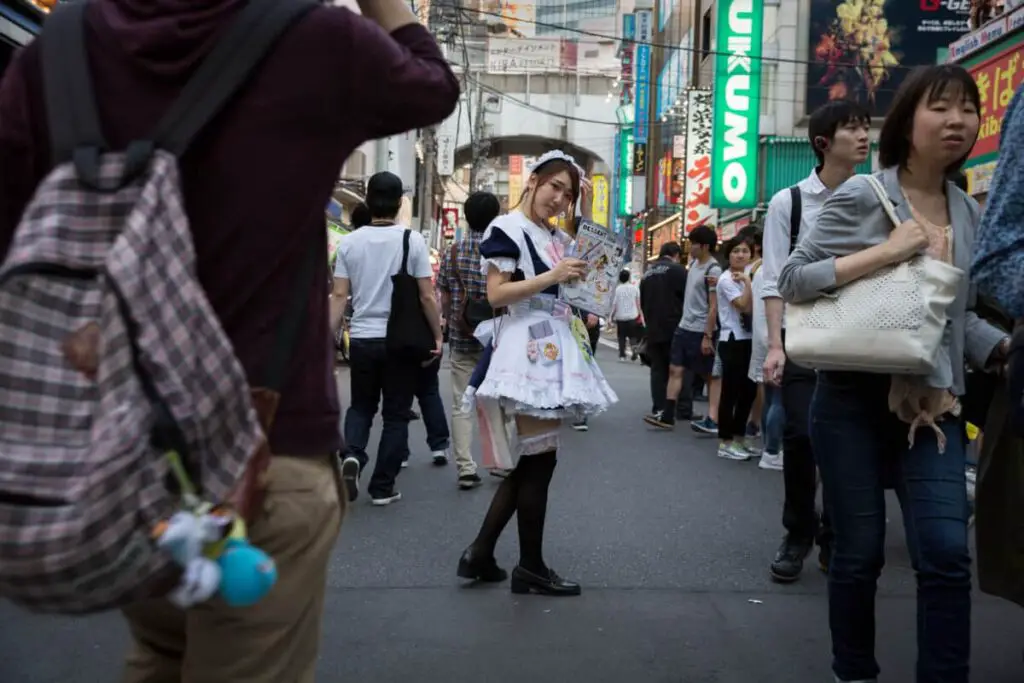
If you love ramen, you’ll want to try it while you visit. Ramen is an everyday item of the Japanese diet. If you want to learn how to make your own, you could also consider visiting a Ramen workshop.
When one thinks of the cuisine found in Japan, one of the staples is sushi. Whether you eat it conveyer belt style, order yours and wait, or you take a sushi class, it’s a must when you’re visiting Japan any time of year.
If you have no idea where to start, but you’re a foodie, you might want to consider a food tour. You’ll get insider information on all the great restaurants and learn information other tourists may never know.
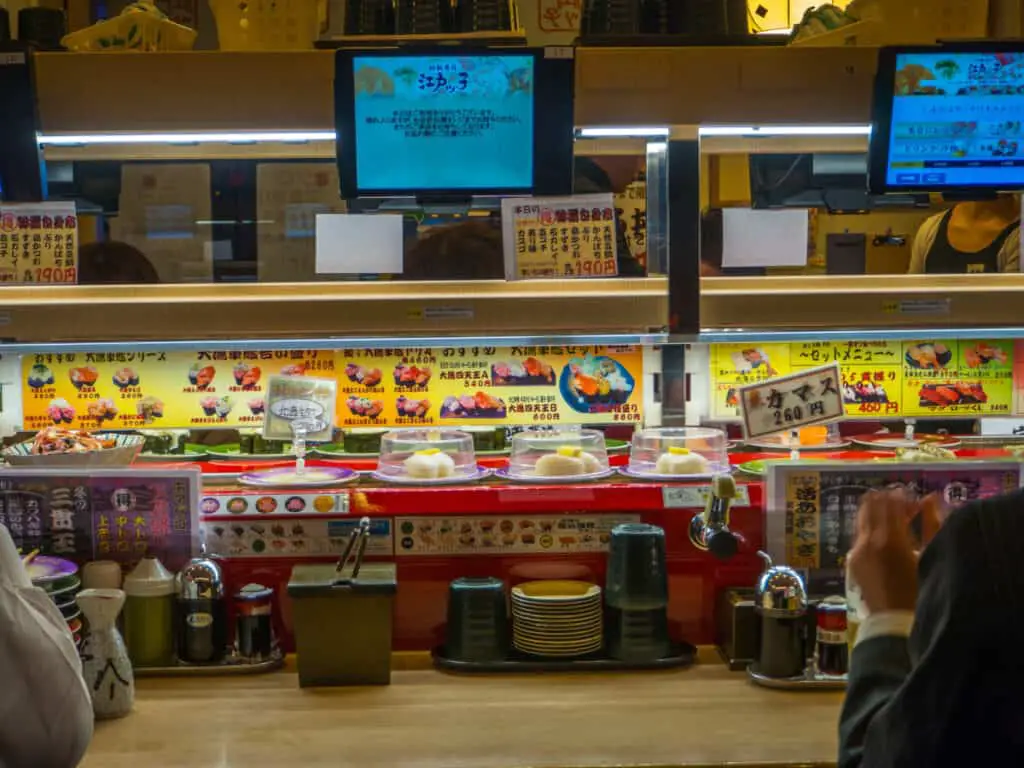
If you’re interested in how to cook great Japanese foods at home, or preparing them for your friends, you can try cooking classes on a variety of Japanese cuisine.
Why should I travel to Japan in June?
There are fewer tourists in Japan in June, and that means you can see more, do more, and do it more affordably.
Hotels are going to have more availability, lines will be shorter at attractions, and traveling to the attractions should take less time than it would in peak season.
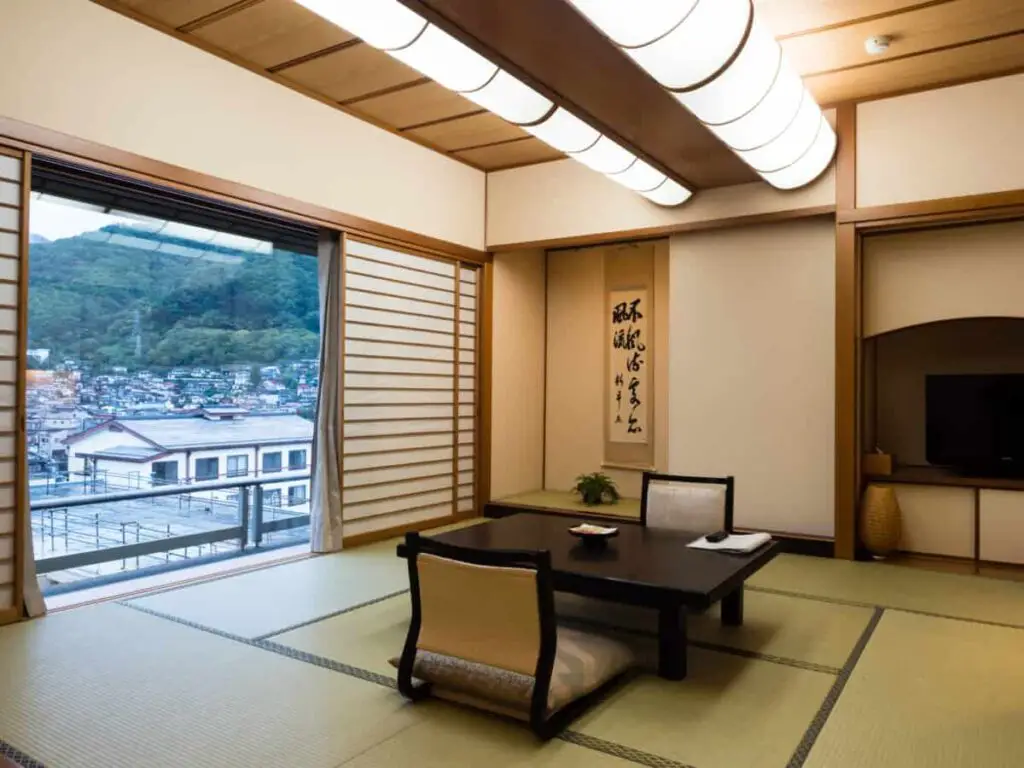
Hydrangeas are one of the centerpieces of the rainy season, even inspiring several hydrangea festivals. The Bunkyo Hydrangea Festival is just one example.
Another popular reason to visit is for all the outdoor hiking and exploring options. One popular activity in June is canyoning, and some tours are in English so foreigners can also enjoy the activities.
Canyoning includes activities like rock jumping, water rafting, and more!
What else can I do in Japan In Early Summer?
Hiking trails and walking gardens are prevalent in the culture of Japan, and they make for a great tourism experience as well. On the Kumano Kodo Trail, you can stay in traditional guesthouses, hike, and experience the beauty of nature in Japan.
Soaking in a hot spring or onsen, commonly an onsen, which is a hot spring with a bathing facility. They’re found all over, and they’re usually separated by gender.
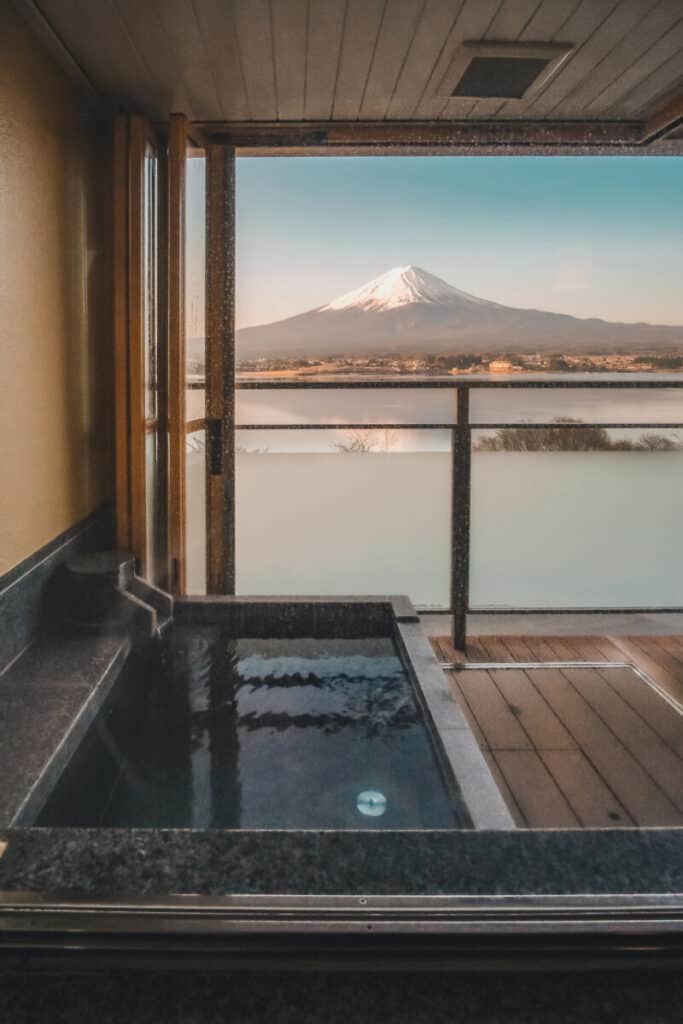
It may be unfamiliar and uncomfortable when you find out that the onsens and their indoor counterparts sentos are communal baths. Everyone gets naked, and nobody cares what you look like. It’s a natural part of Japanese culture.
Photo booths are quick memorable experiences, often found in arcades. These generally cost about 400 yen, so even budget travelers can enjoy them for years to come.
Tea ceremonies, ramen, and nature are a large part of Japanese culture, among other staples. There’s something for everyone to enjoy, rain or shine.










